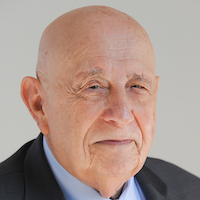Correlates of protection for SARS-CoV-2 vaccines
Vaccine Insights 2022; 1(1), 85–93
DOI: 10.18609/cgti.2022.013
Vaccine Insights brought together three leading experts to discuss how the COVID-19 pandemic has advanced our understanding of correlates of protection – and where further research is needed.
Watch the roundtable here, or read the full discussion below
You are all part of a COVAX working group on correlates of protection (CoPs) – what is the structure of the group and how does it exert its influence?
PD: The CoPs working group falls under the COVAX pillar of the Access to COVID-19 Tools (ACT) Accelerator. COVAX is the vaccines initiative that was co-convened by WHO, Gavi, the Coalition for Epidemic Preparedness Innovations (CEPI), and UNICEF. Within the COVAX pillar, CEPI and BMGF managed a Clinical SWAT team, which organized and coordinated R&D to move vaccines as quickly as possible through the development space [1]Epidemic Preparedness Innovations.. Within the Clinical SWAT were several working groups, one of which is a CoP working group, of which we are all members. We essentially repurposed a Gates Foundation advisory group on CoPs to work on COVID-specific correlates activity.
Our efforts were focused on facilitating the conversation around the evidence on CoPs to accelerate product development and bring other developers forward as quickly as possible. We led conversations about where we are on the journey to identifying CoPs through workshops to accelerate new vaccines into use [2]Clinical Development and Operations – Clinical Science.. We also tried to publish the evidence as it became available and encouraged developers to make their data available as soon as possible so it could be part of the conversations around CoPs.
How does the working group define a CoP for vaccines in general, and specifically for SARS-CoV-2?
SP: Defining CoPs is critical to vaccine development against any disease but has been particularly important for SARS-CoV-2 due to the urgency to develop vaccines. CoPs are important not simply for basic knowledge, but also because they enable the correct antigen choice to protect against a particular disease, as exemplified by COVID-19.
A CoP is an immune response that is statistically interrelated with protection. In vaccinology, one can have correlates that are absolute – if an individual has that response, they are fully protected. Alternatively, a correlate may be relative – a higher level is more protective than a lower level.
To understand CoPs, it is important to acknowledge the difference between mechanistic and non-mechanistic correlates. A mechanistic correlate is an immune response that is biologically responsible for protection, whereas a non-mechanistic correlate is a biomarker that we can use quantitatively but is not the biological reason for protection. Defining the importance of neutralizing antibodies in the case of COVID-19 was critical to the further progress of vaccine development and the choice of effective vaccines.
How do CoPs inform our approach to SARS-CoV-2 vaccine development?
SP: The development of vaccines against COVID-19 was brilliant. Vaccines were developed in a short period of time, and that success was based on animal and in vitro studies showing that the neutralizing antibodies could protect in in vitro tissue culture assays and experimental animals. When studies were done in human populations, it became clear that those with higher neutralizing responses were better protected than those with lower neutralizing responses. Therefore, one could distinguish between experimental vaccines based on their ability to produce those antibodies.
Of course, the immune system is complex and other responses may have their importance. However, it became clear that the vaccines that produce high levels of neutralizing antibodies gave the best efficacy in clinical tests. Therefore, one can use that index to study newer vaccines.
Can CoPs be used to license a new vaccine in the absence of Phase 3 placebo-controlled efficacy trials?
PG: I think of a CoP as an immune biomarker that can be used to predict the level of efficacy a vaccine provides against a clinically meaningful endpoint such as symptomatic or severe disease. The goal of a CoP is to be able to predict vaccine efficacy and not need to run randomized, placebo-controlled efficacy trials, which are currently the gold standard to prove vaccine efficacy, but are very large, expensive and time consuming.
To be able to use a CoP to license a vaccine without a Phase 3 trial, there needs to be evidence that the CoP works as a predictor of vaccine efficacy. Regulatory agencies have come up with different mechanisms to do this. The traditional approval pathway requires validation that the biomarker is a reliable predictor of vaccine efficacy. Then, a vaccine can be approved based on a non-inferiority study to show that the distribution of immune response for the new vaccine is non-inferior to the distribution of immune response for another licensed vaccine for which the immune correlate was validated.
If there is good evidence that the immune marker is reasonably likely to predict vaccine efficacy but it hasn’t been fully established, regulatory agencies have accelerated approval mechanisms, and can now approve vaccines based on the distribution of the marker being high enough in vaccinees. However, post-approval clinical endpoint studies are required to confirm the efficacy directly. Ideally, those would be randomized studies comparing different vaccines head-to-head.
Meningococcal C conjugate (Men-C) vaccines provided a precedent of a vaccine approval based on a CoP, where a Phase 3 trial was not done. Here, there was a CoP that had been established for another licensed vaccine for the same disease endpoint. Flu is another precedent, where each year the new flu strain vaccine is approved based on the hemagglutination inhibition (HAI) titer CoP without needing to run a new randomized Phase 3 trial to validate that vaccine.
PD: We must also recognize that it is not as black and white as whether we can or cannot trust a CoP. Many of these decisions are made in the context of a risk-benefit assessment that regulators, and the global community, are willing to accept.
In the example of Men-C vaccines that Peter Gilbert described, the rate of disease is extremely low, so you are simply not going to get a vaccine approval unless you apply a CoP. We had to collectively look at the evidence and make an assessment to go ahead and license and confirm efficacy post-licensure with confirmatory studies.
SARS-CoV-2 has offered an amazing opportunity to generate data. I don’t think scientists could have ever dreamed of acquiring the type and amount of data around correlates that we now have and will continue to get from the COVID-19 experience.
How does the application affect the type of validation that is needed? What are the limits of CoPs?
PG: It is important to note that a CoP is not just a single thing. We are generally trying to predict vaccine efficacy in a context that we were not able to study in the original Phase 3 trials. When planning validation for a CoP, we must consider the type of bridging we are trying to do.
It might be taking a vaccine that was proven efficacious in one population and bridging it to another population, for example from adults to children. Other types of bridge could be between an existing and new strain of the virus or a modified dose of a vaccine.
We also must consider endpoints and timing. A CoP against symptomatic COVID-19 might be different from a CoP against severe COVID-19, or viral load. Predicting vaccine efficacy three months after vaccination might be different than predicting vaccine efficacy 9–12 months post-vaccination.
To give an example, if we are trying to bridge to new variants that might emerge later on, the type of validation we want is a series of randomized, placebo-controlled trials, with variability in the types of SARS-CoV-2 variants that are breaking through. Estimates of vaccine efficacy against several different lineages allow for meta-analyses that compare the vaccine response for each vaccine against each of the lineages. From that, we can piece together a model of efficacy by strain-specific antibody and strain-specific COVID-19. But for different types of bridging, the approach might be different.
The limitations of CoP depend on how long the bridge is. If you are taking an identical vaccine for an identical population and creating a new vaccine lot, this makes for a very short bridge with a limited level of validation. However, if you are bridging on many different components, such as a new population, a different circulating variant, or a different vaccine platform, the bridge will be much longer. The longer the bridge, the harder it will be to prove that you can get a high level of predictiveness for a correlate. In those settings, you need more validation data.
SP: In trying to identify correlates, we are trying to simplify something that is very complex. The immune system has a lot of redundancy and many immune responses can be measured. People often object to looking for correlates because the immune system is complex, and many kinds of responses are important. But the practical point is that if you have a correlate, you can make predictions. We are trying to extract what is most important, rather than focusing on the complexity of the immune system.
How can CoPs be applied for decision-making in different settings, such as public health?
PD: There is nuance around CoPs, which comes back to the question of what you are going to use it for, and who is going to use it. CoPs may be used for regulatory purposes, to license a vaccine or immuno-bridge down to a younger age group. However, there are more pragmatic cases. For example, the WHO may want a CoP to help them recommend the timing and need for a booster dose – that is a difficult question to answer. Neutralizing antibodies decline from their peak rather rapidly but whether you need a booster dose now depends on what you are trying to prevent.
In the setting of an individual clinician or patient who wants to know if they need a booster, it depends on the patient, their age, whether they are immunocompromised, and their titer levels. The studies we’ve discussed may not inform that conversation as clearly as they would for a regulator or a general booster dose recommendation for a whole population. The answer to ‘Do you have a correlate?’ depends heavily on the intended use.
PG: When we consider statistical analysis to understand how well correlates predict, we think of two types of correlates. One is the antibody marker measured shortly after vaccination, used as a predictor of the COVID-19 endpoint over the follow-up time. The other is modeling the antibody over time and trying to pinpoint the antibody level near exposures that cause COVID-19 illness. Those require different statistical methods and different planning. In one case you only have to measure antibodies at one timepoint, whereas in the other case you have to measure antibodies at many sampling time points. If the objective is to define a trigger for when you should get a booster dose, performing a longitudinal study to pinpoint the antibody near exposure is more informative.SP: This is an important issue in vaccinology, which goes beyond COVID-19. For example, the mumps vaccine does not give prolonged high levels of immunity. Efficacy must be evaluated over long periods, as well as in different situations. Identifying the correlate is useful not only acutely, but also over the lifetime of the vaccine.
We have mainly discussed neutralization antibodies. How do other aspects of immunity, such as T cells and Fc-mediated effector functions, fit into the conversation about CoPs?
SP: Even considering antibody responses, we measure these by neutralization, which is totally artificial. You take a fixed amount of virus, and you put it together with variable amounts of serum, and you extract an answer that indicates functionality. However, this is only distantly related to what is going on in the body. In reality, there are not only neutralizing responses but also binding antibodies and Fc effector antibodies which contribute to the response. They are not primary correlates, but there is evidence, for example, that neutrophil phagocytosis is an important function of Fc effector antibodies.
With respect to T cells, we need CD4 T cells to develop antibodies, so they could be considered a CoP. But there are other functions of CD4 T cells, some of which we barely know how to measure. Meanwhile, there is good evidence in primates that CD8 T cells are important in recovery from and suppression of SARS-CoV-2 infection. There is evidence that CD8 T cell responses are poor in the elderly, which could be a partial explanation as to why COVID-19 is severe in the elderly.
My final point is that we are insufficiently informed about immunoglobulin A (IgA) and other mucosal responses. We need to know more about those if we are to develop better vaccines against SARS-CoV-2.
PD: One of the reasons our CoP working group has continued despite licensure of multiple vaccines is because of the ‘Holy Grail’ search for a T-cell correlate. We are continuing to solicit collaborators to help us do the gold-standard breakthrough analysis we need. This requires the right samples, collected at the right time, prior to a disease outcome.
We think severe disease is linked to T cells, but we need further analysis to have bulletproof evidence of the contribution of T cells to protection against severe disease. We cannot get a solid look at a T cell CoP for severe disease because we do not have the samples yet.
How do CoPs translate between the different SARS-CoV-2 variants?
PG: Up to Omicron, the data were encouraging on the use of the neutralization marker to predict the efficacy of vaccines against variants. We saw this in various data analyses of the Phase 3 trials and observational studies. We can characterize for each vaccine the neutralization level to a panel of variants. Based on how much the neutralization gets abrogated against a given variant, we can predict how much the vaccine efficacy against the variant should be abrogated compared to against the original vaccine strain lineage. The validation data from Phase 3 and other studies confirm that so far.
Omicron has many more mutations from the vaccine strain than the other variants, and because it is still relatively recent, the question of how well the neutralization CoP model is going to carry over to Omicron is still open. We will have data for this, as the Phase 3 trials supported by the US Government stored samples from trial participants 2–4 weeks after booster doses, when many Omicron breakthrough cases are happening. We will be able to directly study antibodies to Omicron as a CoP against Omicron COVID-19.
We tend to think about correlates against a specific variant or specific lineage, which is always going to be a moving target. There are many discreet genotypes of SARS-CoV-2. Our goal is not to find a correlate for each specific genotype, but to gain a more generalizable model. This will allow us to take a given virus and score it by its predicted neutralization sensitivity to vaccinee sera. Then, we can learn how the correlate works for viruses defined on a neutralization score scale. This will be a better biomarker going forward because it does not require a separate correlation analysis for every genotype. We will be able to use all the cases in the analysis and this biomarker of the virus scoring its antigenic distance to a vaccine insert strain.
SP: It will certainly be important to be able to manage the multiple mutations that will continue to occur in the SARS-CoV-2 virus. One avenue of active research is the development of a broader, pan-sarbecovirus vaccine that would allow us to be ready for the next variant, whenever that occurs. I am optimistic that will be feasible and many groups are working on that.
How confident can we be in applying CoPs to vaccine development for future pandemic viruses?
PD: Going beyond COVID-19, into the next pandemic, we have to be bolder. If we are to have a hope of reaching a 100-day target to develop, scale-up, and move a new vaccine into the community, we must lean into neutralizing antibodies. Unless there is something mechanistically odd about the new pathogenic virus and how it infects humans, we must take a chance.
We will do the safety studies in advance, but we must scale these products in advance of that and confirm with test-negative design, post-licensure studies. My takeaway from this pandemic is that, hopefully, the next time we will do it even quicker.
References
1. Epidemic Preparedness Innovations. Crossref
2. Clinical Development and Operations – Clinical Science. Crossref
Affiliations
Peter Dull
Deputy Director, Integrated Clinical Vaccine Development, Vaccine Development & Surveillance, Global Health Division, Bill & Melinda Gates Foundation
Stanley A Plotkin
Emeritus Professor, University of Pennsylvania
Peter Gilbert
Professor of Biostatistics, Fred Hutchinson Cancer Research Center and University of Washington
Fred Cassels
Global Head, Enteric and Diarrheal Diseases, Center for Vaccine Innovation and Access, PATH
Authorship & Conflict of Interest
Contributions: All named authors take responsibility for the integrity of the work as a whole, and have given their approval for this version to be published.
Acknowledgements: None.
Disclosure and potential conflicts of interest: The authors declare that they have no conflicts of interest.
Funding declaration: Dr Plotkin has received personal fees from Merck, Moderna, Novavax, Omvax, BNT, Xvax, Ntx, Valneva, VaxArt, Sanofi, and GSK.
Article & copyright information
Copyright: Published by Vaccine Insights under Creative Commons License Deed CC BY NC ND 4.0 which allows anyone to copy, distribute, and transmit the article provided it is properly attributed in the manner specified below. No commercial use without permission.
Attribution: Copyright © 2022 Dull P, Plotkin SA, Gilbert P & Cassels F. Published by Vaccine Insights under Creative Commons License Deed CC BY NC ND 4.0.
Article source: This is a transcript of a recorded roundtable.
Interview conducted: Apr 29 2022; Publication date: Jun 9 2022.

 copy.jpg)


